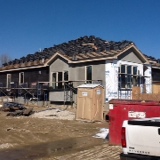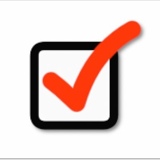Information
-
Client:
-
Conducted on:
-
Prepared by:
-
Client representative(s) present during assessment:
Business Information
-
Business operations:
-
Operations include commercial new construction.
-
Operations include commercial remodeling.
-
Operations include commercial service/repair.
-
Operations include residential new construction.
-
Operations include residential remodeling.
-
Operations include residential service/repair.
-
Equipment used by workers:
- Hand tools
- Basic power tools
- Ladders
- Scaffolds
- Forklifts
- Cranes
- Aerial lifts
- Scissor lifts
- Other
-
Other equipment used:
-
Equipment new and/or maintained?
-
Does the company use sub-contractors?
-
Certificates of insurance are obtained and verified.
-
Subcontractors are screened/pre-qualified for safety performance.
-
Subcontractors screening/pre-qualification efforts include:
- Past OSHA violations
- OSHA incidence rates
- Verify subcontractor safety program
- Reputation/past experience
- Other
-
Other subcontractor screening/pre-qualification efforts include:
-
Radius of operations
-
Out of state operations:
-
Ownership change in the past year?
-
Does this company have any secondary businesses?
Employee screening
-
How does the company find applicants?
- Advertising (newspaper, Craigslist, etc.)
- Walk-ins
- Employee Referals
- Union
-
Written applications required.
-
Applications and/or written job descriptions list the essential functions of the job (climbing ladders, lifting and carrying up to 75 pounds, crawling).
-
Criminal background checks conducted.
-
Criminal checks performed:
- County records checked
- State records checked
- Federal records checked
-
Workers compensation background checks conducted.
-
Work references veriied.
-
Integrity testing conducted.
-
Pre-hire drug testing is conducted.
-
Post-accident drug testing is conducted.
-
Suspicion drug testing is conducted.
-
Random drug testing is conducted. If yes, explain how many are tested how often.
-
DOT drug testing guidelines are followed for CDL holders.
-
Drug testing conducted per project contract, such as government projects.
-
Post-offer/pre-placement physicals performed.
-
MVR checks conducted.
Workforce
-
Total number of employees:
-
Number of unskilled laborers:
-
Number of skilled (foremen, carpenters, jouneymen) craft workers:
-
Number of full-time drivers:
-
Number of mechanics:
-
Number of office management and administration staff (sales, estimating, HR):
-
Number of contract (1099) workers:
-
Number of other workers (specify by job title):
-
Company utilizes temporary and/or day labor.
-
Labor is paid:
-
Percentage of shifts worked that exceed 10 hours per day:
-
Average annual turnover rate:
-
Percent of employees who's primary language is not English:
-
How are language barriers managed?
- Informally through bilingual co-workers
- Company documentation and training is bilingual
- Field supervision is bilingual.
- Safety coordinator is bilingual
Employee Benefits
-
Is health insurance offered to emloyees?
-
How soon are health insurance benefits available to employees?
-
What percentage of premium does the company pay for the employee?
-
What percentage of workers participate in healthcare coverage?
-
Does the company offer a wellness program?
-
Does the company offer an Employee Assistance Program (EAP)?
Safety Coordinator
-
Designated safety coordinator in place with documented roles and responsibilities.
-
Percentage of time safety coordinator commits to safety.
-
Safety coordinator is in the field regularly to assess safety, correct unsafe conditions, assess/address needs for proper tools and PPE.
-
Safety coordinator is knowledgeable in field operations, hazard identification, applicable regulatory requirements, and applicable safety controls.
-
Safety coordinator has pursued professional development opportunities in the past year to improve technical expertise and effectiveness of safety efforts. If yes, list any training, seminars, or conferences attended.
-
Safety coordinator has identified loss trends using insurance carrier loss history reports or other loss data in the last year.
-
Written action plans based off of loss trends are developed and shared with management and/or safety committee for implementation.
-
Other comments regarding safety coordinator:
Safety Program - Safety Training
-
New Hire Safety Training
-
Weekly toolbox talks documented.
-
Daily safety huddles/task-hazard-analysis conducted.<br>
-
Daily safety huddles/task-hazard analysis are documented and signed by crew.
-
Routine company-wide safety meetings/training conducted:
-
OSHA 10-Hour training is provided.
-
OSHA 10-Hour training is provided to:
- Non-supervisory field employees
- Field supervisors/foremen
- Company-authorized operators
- Company-designated "competent persons"
- All company employees
- Safety coordinator
-
OSHA 30-Hour training is provided.
-
OSHA 30-Hour training is provided to:
- Non-supervisory field employees
- Field supervisors/foremen
- Company-authorized operators
- Company-designated "competent persons"
- All company employees
- Safety coordinator
-
Documented scaffold competent person training is provided.
-
Scaffold competent person training is provided to:
- Non-supervisory field employees
- Field supervisors/foremen
- Company-authorized operators
- Company-designated "competent persons"
- All company employees
- Safety coordinator
-
Documented fall protection competent training is provided.
-
Fall protecton training is provided to:
- Non-supervisory field employees
- Field supervisors/foremen
- Company-authorized operators
- Company-designated "competent persons"
- All company employees
- Safety coordinator
-
Documented excavation competent person training is provided.
-
Excavation competent person training is provided to:
- Non-supervisory field employees
- Field supervisors/foremen
- Company-authorized operators
- Company-designated "competent persons"
- All company employees
- Safety coordinator
-
First aid training is provided.
-
First aid training is provided to:
- Non-supervisory field employees
- Field supervisors/foremen
- Company-authorized operators
- Company-designated "competent persons"
- All company employees
- Safety coordinator
-
CPR training is provided.
-
CPR training is provided to:
- Non-supervisory field employees
- Field supervisors/foremen
- Company-authorized operators
- Company-designated "competent persons"
- All company employees
- Safety coordinator
-
Documented forklift training is provided to company-authorized forklift operators.
-
Other safety training is provided. If yes, list topics.
-
Other comments regarding safety training:
Safety Program - Enforcement of Safety Rules and Safe Working Conditions
-
Safety program includes a written safety rule enforcement policy.
-
Workplace safety inspections
-
Corrective actions are documented on inspection documents to verify completion.
-
Safety violations
Safety Program - Safety Rules
-
Safety rules are:
-
Rules are reviewed and updated annually. Rules are dated to confirm last review/revision.
-
Employees received training on rules updated over the past year.
-
Other comments regarding safety rules:
Safety Program - Claims Management
-
Formal claims management procedure in place.
-
Claims procedure is company-specific (lists designated medical providers, policy number, claim reporting instructions)
-
New hires are informed in writing of company's designated medical providers.
-
Injured workers are informed in writing of company's designated medical providers.
-
Other comments regarding claims management:
Accident Investigation
-
Accident investigations are documented.
-
Accidents are investigated by:
- Direct supervisor
- Safety coordinator
- Superintendent or project manager
- Top management of company
-
Investigations identify contributing factors.
-
Investigations identify root causes.
-
Findings have stimulated changes in training, tools, processes, safety rules, or enforcement in the past year. If yes, provide specific example.
-
Injured worker completes accident statement outlining event and injuries incurred.
-
Other comments regarding accident investigation.
Return-to-Work
-
Return-to-work implementation.
Evaluation Signature and Date
-
Evaluator's signature:




















